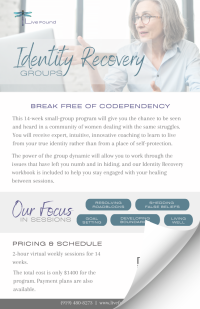Have you ever felt like your emotions are running the show—overwhelming you, pulling you into toxic relationships, or leaving you vulnerable to people who push your buttons? If so, it’s time to discover emotional stability, a true superpower that can transform how you navigate relationships and life itself. In this post, we’ll explore what emotional stability really means, why it’s a game-changer for your connections with others, and three practical steps to start building emotional resilience today. Let’s dive in and unlock the calm, grounded strength within you.
What Is Emotional Stability?
Emotional stability is the ability to stay calm, clear-headed, and centered, even when life throws chaos your way. It’s not about suppressing your emotions or pretending everything’s fine. Instead, it’s about feeling your emotions without letting them take the driver’s seat.
Picture yourself as the eye of a storm. The world around you might be swirling with stress, conflict, or uncertainty, but you remain steady. You’re less reactive, more thoughtful, and in control of your choices. This grounded state doesn’t just feel empowering—it reshapes how you show up in every area of your life.
Why does this matter? Because emotional stability isn’t just about you; it’s about the ripple effect it creates in your relationships, your decisions, and even your ability to protect yourself from manipulation.
The Power of Emotional Stability in Relationships
When you’re emotionally stable, you bring a sense of balance and clarity to your interactions. You communicate with intention, set boundaries with confidence, and avoid getting swept up in unnecessary drama. This creates healthier, more authentic connections with the people in your life.
Consider this scenario: During a heated argument, one partner starts shouting, letting their emotions spiral. The emotionally stable partner, however, doesn’t take the bait. They take a deep breath, stay grounded, and respond calmly rather than react impulsively. This choice doesn’t just de-escalate the conflict—it sets the tone for a more respectful, productive conversation. It doesn’t mean the “calm” partner doesn’t feel emotions – it means the emotions don’t control them.
But emotional stability does more than improve communication. It acts as a shield against manipulation. Manipulators thrive on emotional chaos, using tactics like guilt, gaslighting, or drama to control others. When you’re emotionally stable, you can see through these tactics. You’re not easily rattled, which makes it harder for toxic people to pull you into their games. In short, emotional stability is your emotional armor—a tool for protecting your peace and staying true to yourself.
Think of emotional stability as being the eye of the storm. Life can throw chaos your way, but you remain centered. You’re less reactive, more thoughtful, and more in control of your actions.
So, how do you cultivate this superpower? Here are three actionable steps you can start using today to build emotional resilience and take control of your emotional world.
3 Steps to Build Emotional Resilience
Step 1: Name the Emotion
The first step to mastering your emotions is to identify them. When you feel overwhelmed, pause and ask yourself: What am I feeling right now? Is it anger? Anxiety? Rejection? Naming the emotion creates a moment of clarity, separating you from the intensity of the feeling.
Real-life example: You receive a text that stings—maybe it’s dismissive or critical. Instead of firing off an impulsive reply, take a moment to say to yourself, “I’m feeling hurt” or “I’m feeling disrespected.” This simple act of naming the emotion gives you space to choose how to respond rather than letting the emotion dictate your actions. That space is where your power lies.
Why it works: Labeling your emotions engages the logical part of your brain, helping you process feelings without being consumed by them. It’s like hitting the brakes before you speed into a reaction you might regret.
Step 2: Practice the Pause
When something triggers you, resist the urge to react immediately. Instead, practice the art of the pause. Take a deep breath, count to five, or even step away if you need to. This brief moment of stillness allows you to respond thoughtfully rather than impulsively.
Real-life example: Imagine a coworker makes a passive-aggressive comment during a meeting. Instead of clapping back or stewing in silence, you take a slow breath and stay composed. Later, when you’re calm, you address the issue professionally, preserving your reputation and the relationship. That pause is your secret weapon for staying in control.
Why it works: Pausing interrupts the automatic fight-or-flight response, giving you time to align your actions with your values. It’s a small habit with massive impact, saving you from regret and strengthening your emotional resilience.
Step 3: Set Emotional Boundaries
Emotional stability means recognizing that you don’t owe anyone unlimited access to your emotions. Setting boundaries is about protecting your mental and emotional well-being while still showing care for others. It’s not selfish—it’s wise.
Real-life example: A friend constantly unloads their drama on you, leaving you drained. Instead of absorbing it all, you say, “I care about you, but I’m not in a place to talk about this right now.” This boundary respects both your needs and the relationship, allowing you to stay grounded without resentment.
Why it works: Boundaries create a framework for healthy relationships. They signal to others—and remind yourself—that your emotional health is a priority. Over time, this practice builds confidence and reduces the risk of emotional burnout.
Embracing Your Emotional Superpower
Emotional stability isn’t about being perfect or never feeling intense emotions. It’s about cultivating awareness, staying in control, and showing up in your life with clarity and strength. By naming your emotions, practicing the pause, and setting boundaries, you can transform how you relate to yourself and others. You’ll communicate more effectively, protect yourself from manipulation, and create space for relationships that are balanced and fulfilling.
What’s the bigger picture? Emotional stability empowers you to live with intention. It’s the foundation for making decisions that align with your values, building resilience against life’s challenges, and breaking free from the cycles of chaos that toxic people or situations might create. When you master your emotions, you’re not just surviving—you’re thriving.
If you’re ready to take your emotional resilience to the next level, consider working with a coach or mentor who can guide you one-on-one. Together, you can strengthen your ability to navigate relationships, set boundaries, and stand firm against manipulation. If this blog has resonated with you, I would love to be that coach! You can schedule a session with me through the link below!
Final thought: You are not your emotions—you are the one who chooses how to respond. That choice is your superpower. How will you use it today?




